The CBS data show that life expectancy in Israel in 2016 was 80.7 years among men and 84.2 among women, an increase of 0.6 for men and 0.1 for women compared to 2015. In addition, it was found that 30-year-olds with a high level of education (high school or academic) are expected to live 6.3 years longer than 30-year-olds with a low level of education (less than 12 years of schooling).
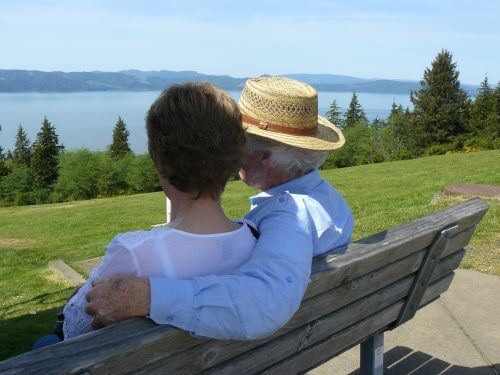
Additional key points from the CBS data:
- The expected healthy years of life from birth were 65.4 years among men and 65.1 years among women, women are expected to live 77% of life expectancy without disability, and men - 81%.
- In the last decade, life expectancy among men increased by 2.0 years and among women by 1.7 years. In the last 30 years, life expectancy among men increased by 7.5 years and among women by 7.4 years.
- The difference in life expectancy between women and men is 3.5 years.
- The gap between Jews and Arabs: 4.3 years among men and 3.3 years among women.
- The difference in life expectancy at age 30 between those with high education (high school or college) and those with low education (less than 12 years of schooling) was 7.4 years among men and 5.0 years among women.
- The gap between the district with the highest life expectancy - the Judea and Samaria region and the district with the lowest life expectancy - the southern district was 2.7 years.
- Among the largest cities in Israel (with more than 100,000 inhabitants), the highest life expectancy was in Ramat Gan and the lowest - in Beer Sheva, a gap of 3.4 years.
- Life expectancy in Israel ranks 11th among the OECD countries, and is 1.5 years higher than the average in the 35 OECD countries.
life expectancy[1] In Israel in 2016 it stood at 82.5 years, 80.7 years among men and 84.2 among women. Life expectancy increased compared to 2015 by 0.4 years in the total population, 0.6 years among men and 0.1 year among women. In 2015 there was a decrease in the life expectancy of men compared to 2014, but in 2016 it increased again. In 2016, 44,191 deaths were recorded in Israel, of which 35,834 were deaths over the age of 65 (81.1% of the total number of deaths) and 566 were infant deaths. The crude death rate[2] was 5.1 per thousand inhabitants. The infant mortality rate was 3.1 per 1,000 live births.
The life expectancy of women is 3.5 years higher than that of men. Among Jews, the life expectancy of women is higher than that of men by 3.2 years, and among Arabs - by 4.2 years. Life expectancy among Jews is higher compared to Arabs: by 4.3 years among Jewish men compared to Arab men, and by 3.3 years among Jewish women compared to Arab women.
Table A - Life expectancy at birth and at age 65,* by gender and population group, 2016

* Life expectancy at age 65 is the average number of years a person is expected to live beyond the age of 65.
There are differences in life expectancy according to religion. Among Arab men, the average life expectancy for the years 2016-2014 is higher among the Druze (79.4 years), than among Christian-Arabs (78.9 years) and Muslims (76.5 years). For comparison, the life expectancy among Jewish men - 81.2 years. Among Arab women, the highest life expectancy was among Arab Christians (83.5 years) compared to Druze (82.4 years) and Muslim women (80.9 years). This, compared to the life expectancy among Jewish women - 84.6 years (2016-2014 average).
Chart 1 - Life expectancy, by religion, average 2016-2014
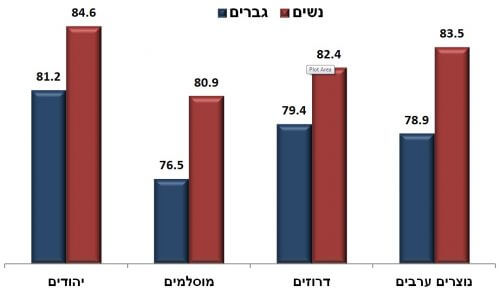
In the last decade (2016-2006), life expectancy among men increased by 2.0 years and among women by 1.7 years. Among men, the increase in life expectancy for Arabs was slightly greater than for Jews (2.1 and 2.0 years per decade, respectively). Among women, the increase for Arab women was higher than for Jewish women (2.9 and 1.7 years per decade, respectively). These differences in the rate of change in life expectancy in recent years have led to a narrowing of the gap in life expectancy between Jews and Arabs, especially among women. Among men, the gap decreased from 4.4 years in 2006 to 4.2 in 2016, and among women from 4.5 years in 2006 to 3.3 years in 2016.
Chart 2 - Life expectancy, by gender and population group, 2006 vs. 2016
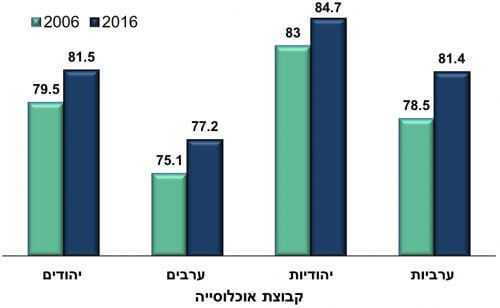
Life expectancy at age 65[3] It stood at 19.5 years among men and 21.7 years among women, an increase of 1.5 years for men and 1.6 years for women compared to 2006. Life expectancy at age 65 was also higher among Jews compared to Arabs, by 2.7 years among men and 2.5 years among women . In the last decade there was a large increase in life expectancy at age 65 among Arab women - 2.6 years, compared to an increase of only 1.1 years among Arab men, and compared to an increase of 1.6 years among Jewish men and 1.5 among Jewish women. Therefore, the gap between Jews and Arabs at the age of 65 also decreased among women, but increased among men.
healthy life expectancy
In recent years, there has been increasing interest not only in the number of years a person is expected to live, but also in their quality, which is why various indices of "healthy life expectancy" have been developed around the world. These indices combine in the calculation of life expectancy based on mortality rates, also indices of morbidity and disability. This is to estimate the years a person is expected to live in good health or without disability, out of the total number of years he is expected to live. For the first time in Israel, the index - (HLY) Healthy Life Years was calculated. This index is used in the countries of the European Union, and is calculated by EUROSTAT as well as by the World Health Organization. The index calculated using the Sullivan method, allows one to get the number of years a person is expected to live in good health, i.e. without a problem that interferes with their functioning, assuming that the current prevalence of health status/lack of health will not change. The index in Israel shown below was calculated according to the 2016 mortality table data and the age-specific prevalence rates of a health problem that interferes with functioning, which were calculated according to the CBS social survey, an average for the years 2016-2014.
The healthy years of life[4] Expectations from birth in 2016 were 65.4 years among men and 65.1 years among women, slightly higher for men compared to women. The difference between the years of healthy life and the life expectancy means the years that a person is expected to live with a health problem that interferes with his functioning, that is, in incomplete health. The difference among men is 15.3 years and among women - 19.1 years. Hence, the life expectancy is indeed higher among women compared to men (by 3.5 years), but it includes a greater proportion of life years with a health problem that interferes with functioning. Even at the age of 65, life expectancy is higher for women compared to men (a difference of 2.2 years), while the years of healthy life are similar for men and women - 10.5 and 10.4, respectively. That is, out of the years of life over the age of 65, women will live an average of 11.6 years and men 9.1 years with a problem that interferes with functioning.
Chart 3 - Life expectancy and years of healthy life, at birth and at age 65, by sex, 2016
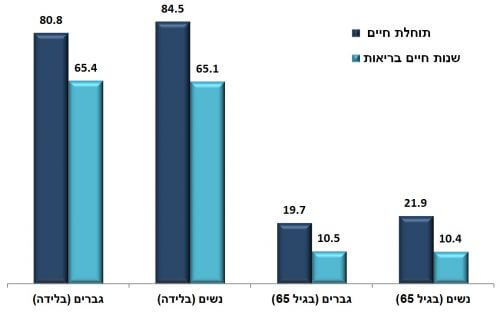
The average healthy life expectancy in EU countries in 2014 was 61.8 years among women and 61.4 years among men. The average life expectancy in the EU countries was 83.6 years among women and 78.1 years among men. That means women can expect to live 74% of their life expectancy without disability, and men - 78%. The corresponding percentages in Israel are slightly higher - 77% among women and 81% among men. The average healthy life expectancy at age 65 in the EU countries was 8.6 years (for men and women). Out of the total expected life years from the age of 65 - men can expect to live 47% without disability and women - 40%. The corresponding percentages in Israel are higher - 54% among men and 47% among women.
Life expectancy in a historical perspective
Life expectancy is on a constant upward trend, increasing by an average of 2.5-2.0 years per decade. In the last 30 years, life expectancy increased by 7.5 years among men and 7.4 years among women. In the last five years there has been a slowdown in the rate of increase compared to previous years, but it is still too early to say if there is a change in the trend. According to the mortality rates of the late 70s, only about 33% of males and 43% of females born, were expected to reach adulthood (their eightieth birthday). But since then there has been a very significant improvement in life expectancy, and of those born today - about 61% of the males and about 73% of the females are expected to reach this age.
In all the years, the life expectancy among the Arabs was lower than the life expectancy among the Jews, both among the men and among the women. From the end of the 70s to the end of the 80s of the last century, the gap in life expectancy between Jews and Arabs was on a narrowing trend, and in 1989-1985 it stood at 1.5 years among men and 2.3 years among women. But since then the gap has increased especially among men, and in 2016-2012 it reached 4.3 years among men and 3.3 years among women.
Chart 4 - Life expectancy at birth, by population group and sex
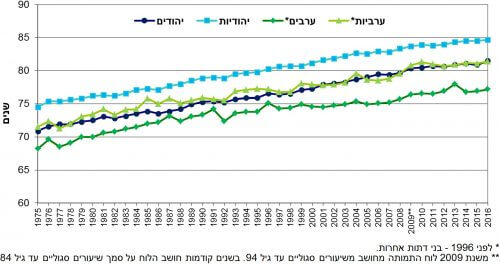
The gap in life expectancy between women and men in 2016 was 3.5 years and the average for the years 2016-2012 was 3.7 years. Despite the fluctuations over the years, there has been no significant change in the gap in the population as a whole, and 30 years ago it stood at 3.5 years. Among Jews the gap narrowed slightly from 3.6 in 1979-1975 to 3.4 years in 2016-2012, and among Arabs it widened from 3.0 to 3.9 years in those years. The gap in life expectancy between women and men in Israel is one of the lowest in the OECD countries. The average in the OECD countries in 2015 was 5.2 years, in Israel the gap this year was 4.0 years. The smallest gap was in Iceland (2.6), followed by the Netherlands (3.3), New Zealand (3.5) and the United Kingdom (3.6).
Differences in life expectancy according to education level
There are disparities in mortality according to education, a variable that expresses socio-economic status as well as awareness. 30-year-olds with a high level of education (high school or academic) are expected to live 6.3 years longer than 30-year-olds with a low level of education (less than 12 years of schooling). The gap among men is greater than among women. 30-year-old men with a high level of education are expected to live 7.4 years longer than 30-year-old men with a low level of education. The gap among women is 5.0 years. The gap in life expectancy between education levels has increased over the years: in 2000 it was 4.3 for both sexes (4.4 years for men and 4.7 years for women).
Chart 5 - Life expectancy at age 30, by gender and education level, 2015
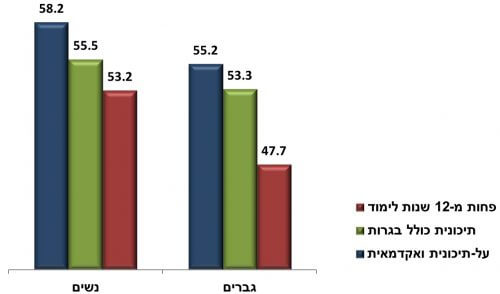
The average difference in life expectancy between the high and low level of education in the OECD countries (25 countries) is 7.1 years among men (similar to Israel) and 4.2 years among women (lower than in Israel). But the range of the gaps was very wide and ranged from 3.2 years for men in Turkey to 14.4 years for men in Slovakia, and from 2.0 years for women in Turkey to 8.7 years for women in Estonia. In all countries (except the Netherlands), the gap was greater among men than women, but there were differences in the extent of the gap between the sexes. It should be noted that the differences in life expectancy between the levels of education in the various countries also depend on the distribution of the population according to levels of education in these countries and patterns of acquiring education in the past, and not only on socio-economic differences.
Chart 6 - Differences in life expectancy at age 30 between a high level of education and a low level, by gender
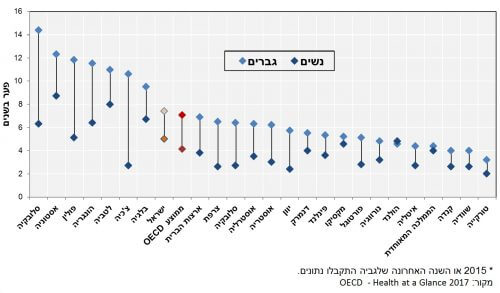
in OECD countries, 2015*
Life expectancy in the provinces
In 2016, a gap of 2.7 years was found between the district where life expectancy was the highest - the Judea and Samaria region (83.7) and the district where life expectancy was the lowest - the southern district (81.0). Also among men, the district where life expectancy was the highest was the Judea and Samaria region and the lowest - the southern region, and the difference between them was 4.2 years. Among women, the district where life expectancy was the highest was the center district (85.3), 2.2 years higher than the life expectancy in the southern district, where life expectancy was the lowest (83.1). In three districts the life expectancy was lower than the national average (82.5): Haifa (82.0), the North (81.4) and the South (81.0).
Chart 7 - Life expectancy, by districts and sex, 2016
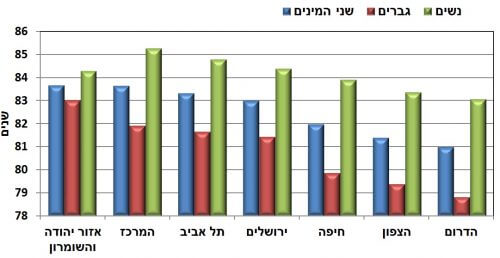
Some of the differences in life expectancy between the districts stem from the different composition of the population - the percentage of the Arab population, whose life expectancy is lower than that of the Jewish population. But also in the examination of life expectancy for Jews and others separately and for Arabs separately, disparities were found between the districts (2016-2014 data). Among Jews and others, the district with the highest life expectancy was Jerusalem (84.0), and it was 2.1 years higher than the northern district (81.2) and 2.6 years higher than the southern district (80.8). Among Arabs, the highest life expectancy was in the northern district (80.1), 1.5 years higher than the Jerusalem district (78.6) and 1.9 years higher than the southern district (78.2).
Chart 8 - Life expectancy in the districts by population group, average 2016-2014
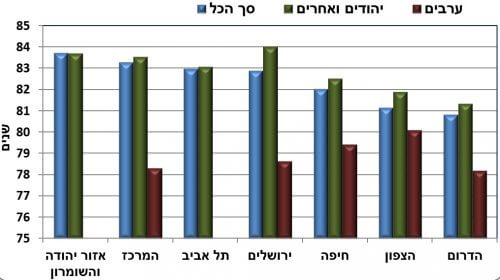
Life expectancy in the largest cities in Israel (we had 100 thousand residents and more in 2016)
Even among the largest cities in Israel there are disparities in life expectancy (2016-2014 data). A gap of 3.4 years was found between Ramat Gan - the city with the highest life expectancy (84.4) and Beer Sheva - the city with the lowest life expectancy (81.0). The life expectancy in Ramat Gan is almost a year higher than the life expectancy in the next ranked city - Rehovot (83.5). In the cities of Ashdod (81.8), Ashkelon (81.4), Bat Yam (81.1) and Be'er Sheva (81.0), life expectancy is lower compared to the national average (82.4).
In all cities there was an improvement in life expectancy in 2016-2014 compared to 2012-2010, except in Beit Shemesh, where there was a slight decrease. The cities where the improvement was the greatest (0.8 year) are: Rehovot, Petah Tikva, Bnei Brak and Tel Aviv-Yafo.
Chart 9 - Life expectancy in large cities (with more than 100,000 inhabitants), 2016-2014 compared to 2012-2010
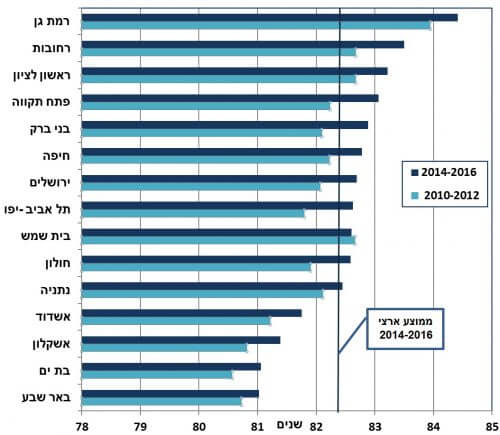
International comparison of life expectancy
Life expectancy in Israel is relatively high compared to the OECD countries, but nevertheless there has been a decline in its relative position in recent years.
In 2015, Israel was ranked 11th with a life expectancy of 82.1 years (total population), 1.8 years lower than the first ranked Japan, and 0.9 years lower than the second place (Switzerland and Spain). Life expectancy in Israel was 1.5 years higher than the average of the OECD countries. In the years 2013-2010, Israel was ranked eighth among the OECD countries. This is after a constant improvement from the eighties of the last century when it was placed in 14th place, but in the last two years its relative position has decreased.
There is a gap between the relative position of men and women in an international comparison of life expectancy at birth, but it has narrowed over the years. In 1980 the women were placed in 21st place and the men in 9th place. Over the years there has been an improvement in the relative position of men and women, and in 2010, men were placed in 3rd place and women in 10th place. On the other hand, in 2015 the position was lower - men in 8th place and women in 13th place.
The life expectancy of men in 2015 (80.1) is similar to that of men in Spain and Luxembourg, 1.1 years lower than the leader - Australia, and 2.2 years higher than the average in the OECD countries (77.9). The women's life expectancy (84.1) is similar to that of the women in Sweden and Norway, 3 years lower than that of the leader - Japan, and one year higher than the average in the OECD countries (83.1).
Chart 10 - Life expectancy of men in Israel and the OECD countries, 2015
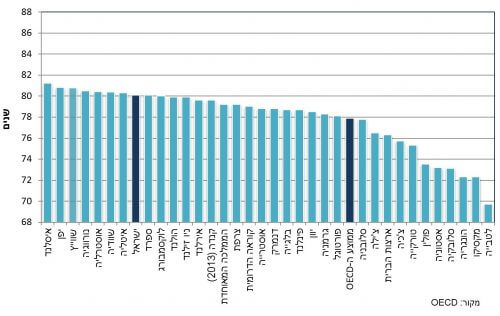
Figure 11 - Life expectancy of women in Israel and the OECD countries, 2015
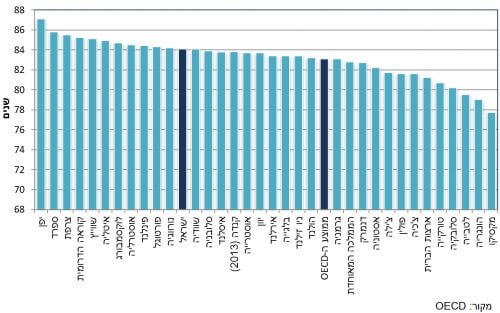
Comments
[1] Life expectancy is the average number of years a person is expected to live from birth or from a certain age, assuming that the existing mortality rates during the reference period will remain constant throughout his life.
[2] Crude death rate is the number of deaths per 1,000 inhabitants.
[3] Life expectancy at age 65 is the average number of years a person is expected to live beyond the age of 65.
[4] Healthy life years - the average number of years a person is expected to live without a problem that interferes with their functioning. The calculation is based on mortality table data and age-specific prevalence rates of a health problem that interferes with functioning, calculated according to the CBS social survey.

4 תגובות
A considerable part of the causes of death.. is the food.
It is important to make a graph according to sectarian origin.
It will turn out that the Iraqi tribe lives longer.
In Ramat Gan there is a large concentration of Iraqis.
The data also slightly undermines my faith in the hilkot of the Jewish rabbis whom I have trusted for years.
Assuming that the next world is uncertain and here and now are our lives, how is it possible that the men in Iceland eat mainly pork, eat cheese and pork together, do not separate dishes for meat and milk, on Shabbat travel with their children around Iceland, do not pray in the synagogue and do not fast on Yom Kippur and do not even use the elevator Shabbat and still live better and healthier than us. Really annoying
It is a shame that the comparative data between populations in Israel only take into account independent variables such as level of education and place of residence. It seems that independent variables such as socioeconomic ranking and ethnic origin are equally relevant and significant.
And still women retire years before men and do not hear a word about it from feminists who demand equality